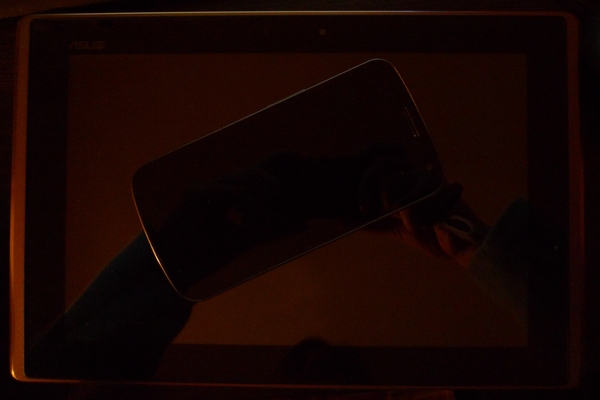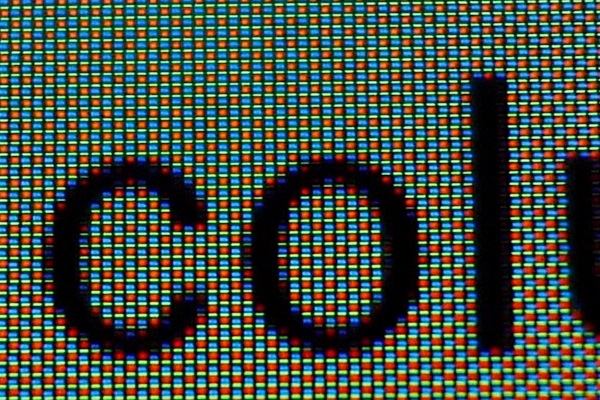
Call me weak-willed. I bought a Galaxy Nexus, not long after declaring I’d beaten the temptation. My old not-very-smart phone had stopped working, and I was loving my Asus Transformer, a 10-inch tablet running the Android operating system (Honeycomb variant) but craved something easier to hold with a dozing baby occupying one arm.
I did consider the iPhone, despite the nonexistence of iTunes for Linux and misgivings over the level of control that Apple wants to keep over devices people buy from them. There’s a wealth of mature iOS apps and the photo samples I’ve seen are fantastic for a phone.
I took the plunge on the Galaxy Nexus in advance of a trip to Montréal, where GPS and Google Maps helped us to plan just about everything (and that’s just using the wifi in the hotel and looking at cached maps while out).
Without further ado, some impressions of the Galaxy Nexus:
Size: It’s a little big; a bit unstable to shift around in one hand (and I really don’t want to drop such a pricey device). On the other hand (heh heh groan), coming from a 10-inch tablet, I had been worried about using a phone-sized screen, so I didn’t feel comfortable going for anything much smaller. I think that was the right inclination. For the reduction in screen size, I didn’t find the iPhone (for example) was noticeably more secure in the hand, particularly when taking photos, because it’s thick and heavy.
Build: Luxurious. Where the ASUS Transformer does some things very well, and makes no apologies about the rest, the Galaxy Nexus is at another level. Comfy sculpted shape, nice texture on the back (well, the Transformer has a nice texture on the back too). Smoothly and solidly put together. The display glass is rounded where it meets the chassis. The battery cover is super-light, strong and flexible, and does not feel bendy when it’s in place. I’ve seen it criticized as seeming “cheap.” I think that’s nuts. It’s good engineering, and it looks and feels great. But that’s the perspective of someone who thinks a heavy, thick, shatter-able glass backside on an electronic device is a drawback rather than a feature. Because the screen is very slightly concave, the phone rests on the ends of the plastic chassis, rather than on the glass, when it’s sitting face-down on a flat surface. The screen coating is slippery and the display, when off, is very black. I’ve had trouble finding it in the dark. Below is a pic of it sitting on top of the Transformer (both screen-side up).

Display: The Galaxy Nexus has an “RGBG” PenTile display, which uses a couple of smaller green subpixels for every red-blue pair. From an angle, a nominally white screen does take on a visibly greenish hue. Straight on, it looks fine. I’m not sure why, but for the first couple of days, whenever I would look away from the screen, the room would seem lit with old-fashioned fluorescent lights for a few seconds. I almost never notice this anymore, which I find interesting. Text looks really smooth, and I do appreciate the very black blacks of the “Super AMOLED” technology. The colours are oversaturated, which means flesh tones look orangey and it would be unwise to edit an important photo for colours on the phone. Having scrutinized the iPhone 4s in the store, all things being otherwise equal (including screen size), I’d probably prefer its display.

(The very good Fresco Pro finger-drawing app.)
I took some close-ups of both screens with a Panasonic DMC-LX3. This was partly to see just how much detail the LX3 could capture, as I’ve had some good luck with pseudo-macro shots with that camera. To model for the shots, I chose Wikipedia, for its white background, black text, and good vibes. Being a nerd, I thought the entry on niobium would be as good as anything. Â First the Galaxy Nexus with its PenTile pixel arrangement:

The background is nominally white. If I’d exposed the photo longer to make it nice and bright, the individual pixels would have looked blown out in the close-up crop:

Now the RGB screen of the TF101 Transformer. The screen is bigger, the pixel density is lower, and the text is bigger. Both sets of photos are at about the same magnification: the LX3 zoom was set to the widest possible angle and the lens was almost touching the screen in each case.

Cropped:

RGBRGBRGBRGBRGB. Oh. Sorry, I thought you’d left. Where was I?
I don’t mind the resolution on the Transformer’s IPS screen, and I love the colours, but text is luxuriously clear and smooth on the Galaxy Nexus.
Camera:Â I was disappointed. I can take photos really quickly, but it seems really difficult to take a clear photo at any speed. Using tapping-to-focus, I sometimes think I see it focusing through the clearest point and settling at a different one. Every once in a while I get a decent shot, and it starts me off again wondering whether there’s something dodgy going on in software. This is where my strongest argument for getting an iPhone lies.
Filesystem: Because of the way the filesystem is set up on the Galaxy Nexus, with data and apps sharing the whole space, there’s less space wasted. However, for some reason this means Google couldn’t set this phone up as a USB mass storage device. Which means I tried to use an app (ES File Explorer, which I’ve loved up until this point) to transfer my photos over a Samba network. And then a whole pile of videos failed to transfer to the computer. Uh oh. They were also no longer on the phone. Crap is all I have to say about that. That and some other roughly synonymous words.
As it happens, PTP mode works fine for transferring these files via USB to my computer. Probably should have done that in the first place. However, what I really want is a removable microSD card I can slot into my reader. Argh. It’s a long time since I’ve lost files and it makes me a bit agitated.
General use: Very responsive. Again the word “smooth” comes to mind. This phone is one smooth package. I have one huge complaint about the ergonomics though: the volume rocker is opposite the power button. I regularly hit both when I’m trying to hit only one. If I hit them simultaneously when the phone is on, it takes a screenshot. If I hit just the volume rocker, it vibrates or makes a beep to tell me how loud I’m setting the volume with it. This can be inconvenient if I’m trying to settle a baby down, and could be equally annoying in a lecture or a meeting. Plus, that wasn’t what I was trying to do, so I have to take the time to try again.
Text entry: The stock Android keyboard in Ice Cream Sandwich is a lot nicer than that in Honeycomb. For tapping out letters I no longer feel that Thumb Keyboard is necessary (whereas it was a great discovery on my Transformer), but since putting the Swype beta on the Transformer I find any other keyboard on a touchscreen to be agonizing to use.
As of this writing, I’m pretty sure Swype hasn’t been released to work under Ice Cream Sandwich, although an unauthorized version of the beta modified to work on the Galaxy Nexus can be found. One thing to note about the latest Swype is that it includes Dragon voice recognition, which beats the pants off of the Google voice recognition, at least when it’s me talking.
Face recognition to unlock: it features amusingly in ads and is a talking point, but it’s more a toy than a security feature. Â I enabled it to see how well it works. Most of the time it said it couldn’t find my face, that the lighting was too dark, or just that it didn’t recognize me, and dropped me to a keypad to enter my PIN. I disabled it again.
Overall, I’m very happy with the Galaxy Nexus as a portable internet tool (and it works fine as a phone). It’s a tiny bit big in my medium-sized hands, if I can’t devote much attention to it. With Swype (still unofficial on this phone), it’s easy to compose short texts. The camera is OK, though I don’t feel that I can leave my Panasonic LX3 at home if I think I may want to take photos. This is the biggest downside for me, having seen some iPhone 4s photo samples.
I’m hoping that by the time I’m ready to replace this, devices will routinely include Wacom-like pressure-sensitive stylus tech for really awesome portable sketching functionality.










